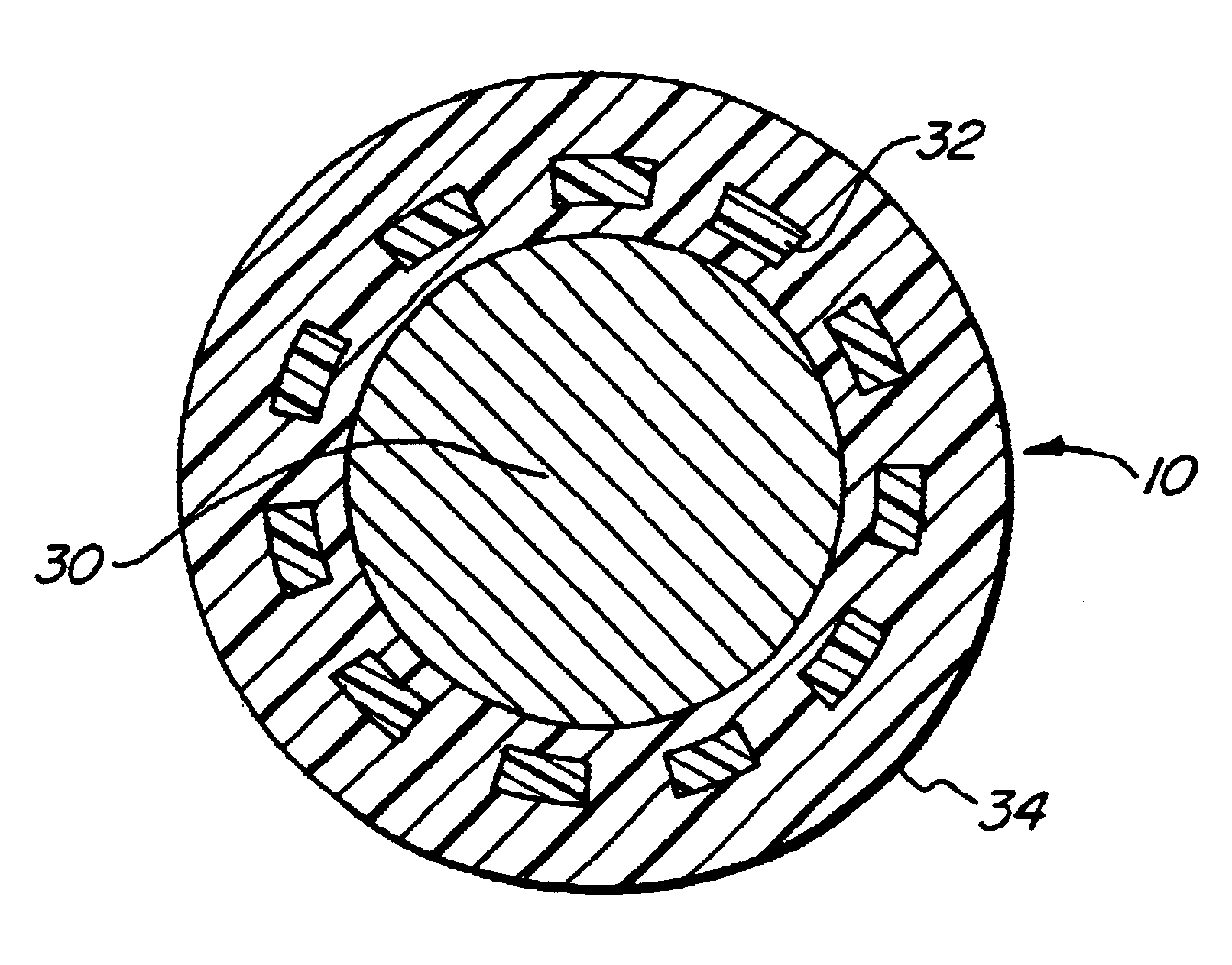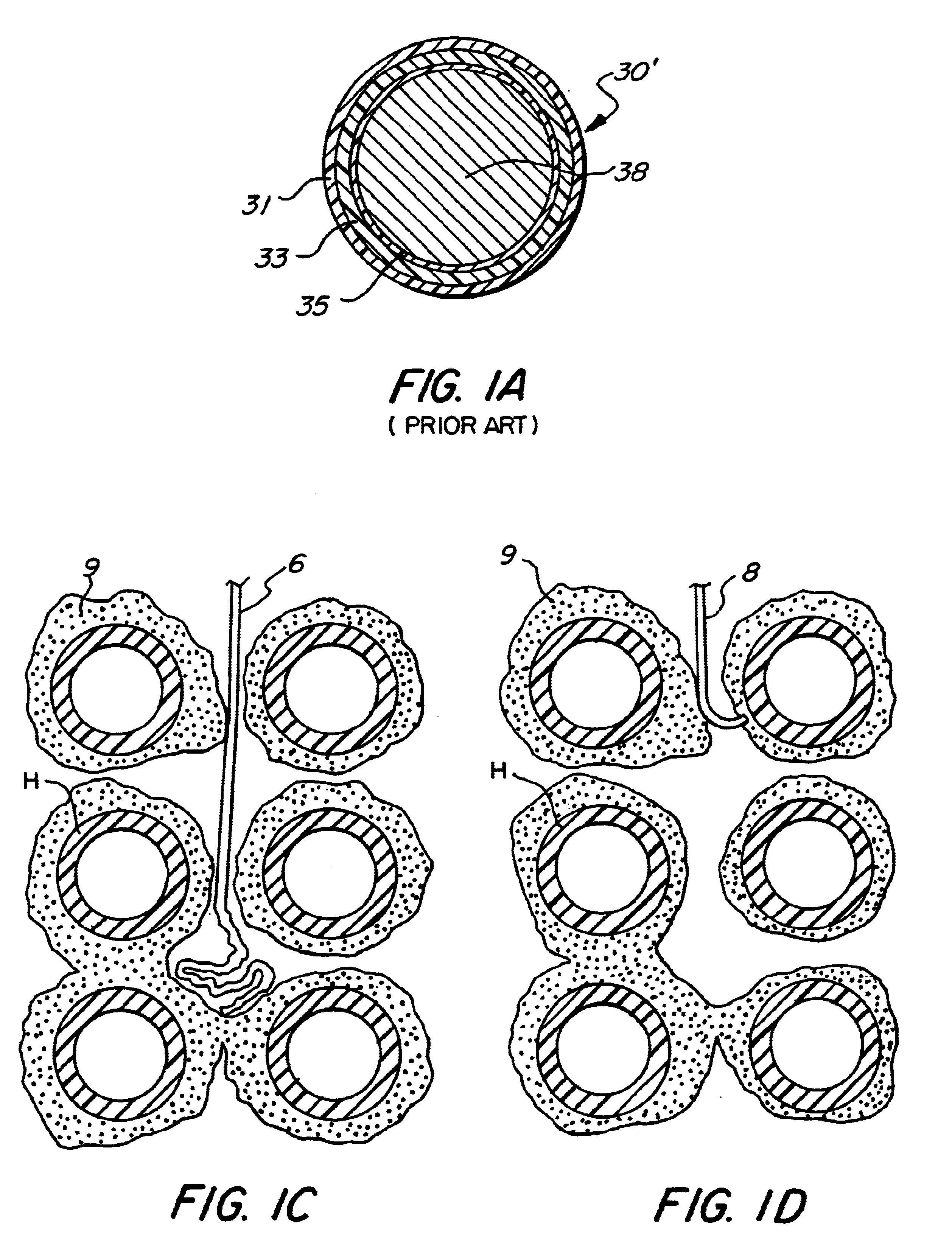Rigid reactive cord and methods of use and manufacture
a technology of reactive cords and rigid cords, applied in the direction of fuses, blasting, weapons, etc., can solve the problems of other particulates, inability to push, and inability to easily push the detonating cord through a small passageway
- Summary
- Abstract
- Description
- Claims
- Application Information
AI Technical Summary
Problems solved by technology
Method used
Image
Examples
Embodiment Construction
The invention provides a rigid reactive cord having a core of reactive material within a non-metal sheath. The cord of this invention comprises a sheath produced in a process which includes continuous extrusion steps of the type generally known in the art of the manufacture of detonating cord. The resulting product, however, is sufficiently more rigid than prior art non-metal-sheathed reactive cord to permit it to be pushed through a narrow or slightly irregular passage or to be pushed through (i.e., to penetrate or perforate) fly ash as part of a deslagging operation for a boiler or through another material to be fractured. Similarly, it is sufficiently rigid to permit its being pushed upwards, e.g., through a bank of boiler tubes. Therefore, in many circumstances the rigid cord of the present invention obviates the need in deslagging operations for rodding of fly ash and for threading of detonating cord through narrow or irregular passages. The rigidity of this product is demonstr...
PUM
 Login to View More
Login to View More Abstract
Description
Claims
Application Information
 Login to View More
Login to View More - R&D
- Intellectual Property
- Life Sciences
- Materials
- Tech Scout
- Unparalleled Data Quality
- Higher Quality Content
- 60% Fewer Hallucinations
Browse by: Latest US Patents, China's latest patents, Technical Efficacy Thesaurus, Application Domain, Technology Topic, Popular Technical Reports.
© 2025 PatSnap. All rights reserved.Legal|Privacy policy|Modern Slavery Act Transparency Statement|Sitemap|About US| Contact US: help@patsnap.com



